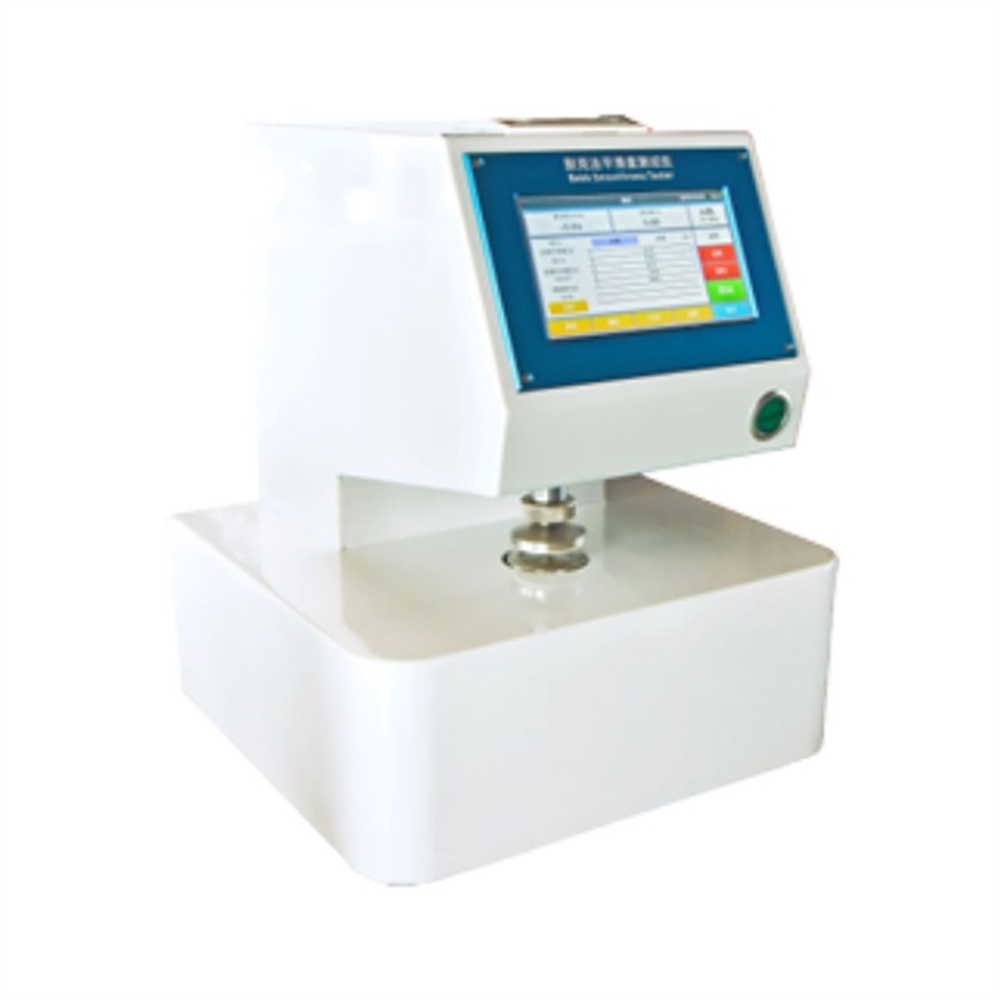Introduction to the Bekk Smoothness Tester
The Bekk Smoothness Tester is a high-precision device specifically designed to measure the surface smoothness of paper and board materials using the renowned Bekk Method. This sophisticated instrument provides vital data on the flatness and evenness of paper surfaces, key characteristics influencing quality in applications like printing, packaging, and product manufacturing. With the Bekk Smoothness Tester from Cell Instruments, industries can ensure their materials meet high standards of smoothness, enhancing final product quality and consistency.
Understanding Smoothness in Paper and Board
Smoothness is a critical quality parameter that measures the evenness of a paper or board surface. It is quantified as the time required for air to pass between the test sample’s surface and an annular ring under controlled pressure conditions, measured in seconds (s). Higher smoothness values, indicated by longer airflow times, mean a flatter surface, which typically translates to improved print quality, better ink adherence, and visually appealing product finishes. By ensuring high surface smoothness, manufacturers can meet stringent quality standards in packaging and printing.
Core Testing Principle of the Bekk Smoothness Tester
The Bekk Smoothness Tester operates on the fundamental principle of the Bekk method, which uses precise air displacement measurements to gauge surface smoothness. During the test, the sample is placed on a glass plate under controlled pressure. A partial vacuum is created, allowing atmospheric air to move across the sample’s surface. The time required to achieve a specific change in vacuum level is measured, with longer times indicating smoother surfaces. This method delivers reliable, repeatable results critical for quality assurance in paper and board applications.
Compliance with ISO 5627 – Paper and Board Smoothness Testing
The Bekk Smoothness Tester is fully compliant with Norma ISO 5627:1995, the internationally recognized standard for determining the smoothness of paper and board using the Bekk method. Norma ISO 5627 outlines strict testing conditions, including specified pressure differentials, contact pressure, and measurement duration, all of which the Bekk Smoothness Tester upholds. Compliance with ISO 5627 ensures consistent, accurate smoothness testing that meets global quality benchmarks, enabling manufacturers to adhere to international standards and deliver reliable results.
Features and Benefits of the Bekk Smoothness Tester
- High Accuracy and Reliability
The Bekk Smoothness Tester employs a stepper motor and high-precision load sensor, ensuring smooth and uniform pressure application without damaging samples. Unlike some smoothness testers that use weights or spring mechanisms, this design prevents sample impact and pressure inaccuracies, maintaining a high testing accuracy of 100 ± 0.5 kPa. - Ease of Use
One-button testing functionality removes the need for manual settings, making it user-friendly for operators at any skill level. The intuitive 7-inch touch screen displays real-time data, enabling efficient navigation and test monitoring. - Advanced Airflow Detection and Control
Equipped with precise airflow detection, the instrument automatically identifies the range required based on sample properties and adjusts airflow speed accordingly. This feature ensures optimal venting control and reliable results, even for diverse sample types. - Maintenance-Free Operation
The tester includes an imported, oil-free vacuum pump designed to function maintenance-free over its lifetime, adding reliability and convenience to the testing process. - Built-in Thermal Printer
An embedded thermal printer enables quick printing of test results, streamlining workflows and documentation for laboratory records.
Conformance to Other Standards
In addition to ISO 5627, the Bekk Smoothness Tester adheres to several key standards, making it versatile and suitable for global applications:
- GB/T 456-2002 – Specifies the Bekk method for determining smoothness in paper and board, widely used in the Chinese market.
- QB/T1665 – This Chinese national standard governs smoothness testing for paper and board, with methods aligning closely with the Bekk Method.
- TAPPI T479 – The Bekk smoothness method as defined by TAPPI, commonly used in North American markets for accurate smoothness testing of paper materials.
Applications of the Bekk Smoothness Tester
The Bekk Smoothness Tester is invaluable in several industries where material quality and performance are paramount:
- Packaging – Smooth surfaces ensure superior packaging finishes and durability.
- Printing – High smoothness values are essential for clear, vibrant printing results.
- Quality Inspection Agencies – Compliance testing ensures materials meet regulatory and consumer standards.
- Paper and Cardboard Manufacturing – Smoothness measurements ensure consistent product quality across manufacturing runs.
- Research and Development – Testing new material formulations for surface quality and functionality.
Technical Specifications of the Bekk Smoothness Tester
- Measurement Range: Precision smoothness readings across specified pressure and vacuum conditions.
- Pressure Control: Advanced 100 ± 0.5 kPa control with stepper motor and load sensor integration.
- Display: Large 7-inch color touch screen for easy operation and data visibility.
- Printer: Embedded thermal micro printer for immediate results output.
- Vacuum Pump: Oil-free, maintenance-free vacuum pump for consistent and reliable testing performance.
Frequently Asked Questions (FAQ)
- What types of materials can be tested with the Bekk Smoothness Tester?
The Bekk Smoothness Tester is designed for paper and board materials, suitable for applications in packaging, printing, and product quality testing. - How does the Bekk method differ from other smoothness testing methods?
The Bekk method measures smoothness based on air passage time under specific pressure, providing a highly sensitive and accurate smoothness evaluation for fine surfaces. - What are the main advantages of ISO 5627 compliance?
ISO 5627 compliance ensures that the smoothness test meets internationally recognized standards, providing reliable and consistent results for quality assurance. - How do I interpret the test results in terms of smoothness?
Longer test times indicate higher smoothness. Higher smoothness generally correlates with better print quality and surface uniformity. - What maintenance is required for the Bekk Smoothness Tester?
The Bekk Smoothness Tester requires minimal maintenance due to its oil-free vacuum pump, which is designed for long-term, maintenance-free operation.





